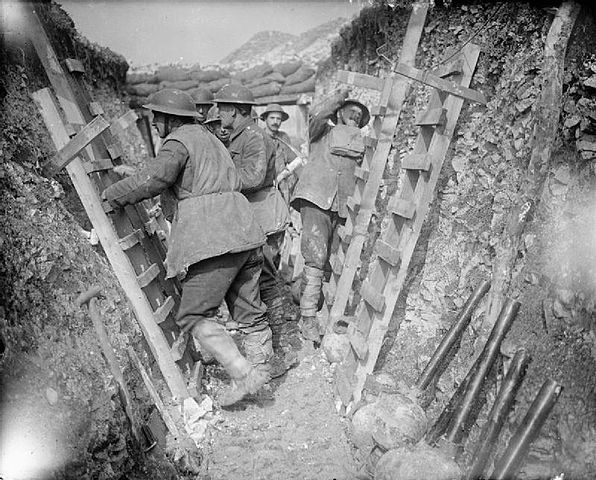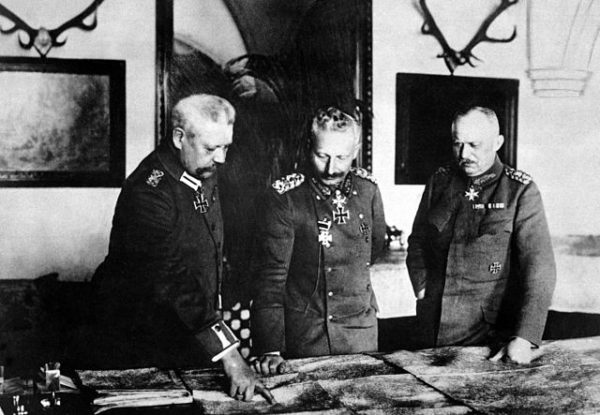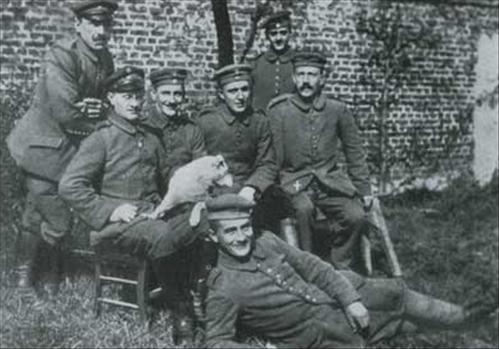Ninety eight years ago, on an overcast day on November 11, 1918, the long nightmare of World War I ended with an armistice.
Optimists claimed that World War I would be “the war to end all wars.” But in fact, the armistice, signed in a railway carriage in France by the Allied powers and Germany, would be little more than a temporary ceasefire, as one French general presciently predicted.
The victorious Allies demanded Germany’s abject surrender, rejecting the notion that the costly four-year conflict could be brought to a conclusion through peace negotiations.

The Allies thereby sowed the seeds of World War II, claims Cambridge University historian David Reynolds in Armistice: The End Game of World War I, an absorbing documentary now available on the Netflix streaming service.
Russell Barnes’ film, authoritatively narrated by Reynolds, advances this plausible argument by examining the major turning points of the war.
Germany gambled it could win the war within a few months. The Germans decisively defeated the Russians on the eastern front in the 1914 Battle of Tannenberg, but on the western front, the war degenerated into static trench warfare.

In a bid to turn the tide, the German general staff promoted two seasoned generals, Paul von Hindenburg and Erich Ludendorff, to refine Germany’s strategy. The German army attacked French positions in the Battle of Verdun, prompting Britain to launch an offensive against the Germans in the Battle of the Somme.

The British ultimately succeeded in relieving German pressure on France, but their casualties on the first day of the Battle of Somme were nothing less than frightful. Wilhelm II, the German kaiser, intervened and appointed Hindenburg and Ludendorff to take charge of the war effort.
The decision by the United States to enter the war in 1917 on the side of the Allies tipped the balance of power against Germany. But with the Bolshevik Revolution having erupted in Russia in the same year, the Russians withdrew from the war, allowing Germany to transfer 40 divisions to the western front. Germany now had a manpower advantage over the Allies.
In pursuit of total victory, Germany launched a massive offensive on the western front in March 1918, the aim being to capture Paris. France and Britain joined forces to stop the Germans. Undeterred, Germany launched four more offensives to break the impasse.
Germany’s casualties rose to intolerable heights, resulting in crumbling morale, and food shortages in Germany produced nation-wide rumblings of discontent. Shaken to the core by the surrender of 16,000 German troops, Ludendorff concluded that a truce would be in Germany’s best interest. The defection of Bulgaria — Germany’s ally — from the war was another cause for alarm in Berlin.
On October 1, Ludendorff told senior army officers that a truce was necessary. He blamed the disasters in the field on German communists and socialists, claiming they had “stabbed” Germany “in the back.” According to Reynolds, Ludendorff’s ill-conceived decisions were to blame for Germany’s setbacks.
Ludendorff fiercely objected to harsh Allied demands on Germany. Shortly afterward, he resigned. Amid armed revolts throughout Germany, the kaiser abdicated, fleeing to neutral Holland.
Germany belatedly accepted the Allies’ terms, but on the last day of the war, 2,738 soldiers from both sides were killed.

Like millions of Germans, Adolf Hitler, a corporal in the German army, embraced Ludendorff’s “stab in the back” conspiracy theory to explain away Germany’s ignominious defeat. This theory solidified into the gospel truth among right-wing German nationalists and fed into the toxic brew of narratives urging Germany to avenge the “betrayal” of World War I.
With Hitler’s accession to power in 1933, Germany rolled back its losses and Europe slid into another war.